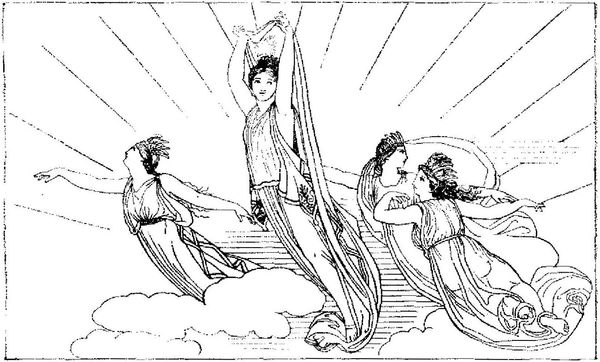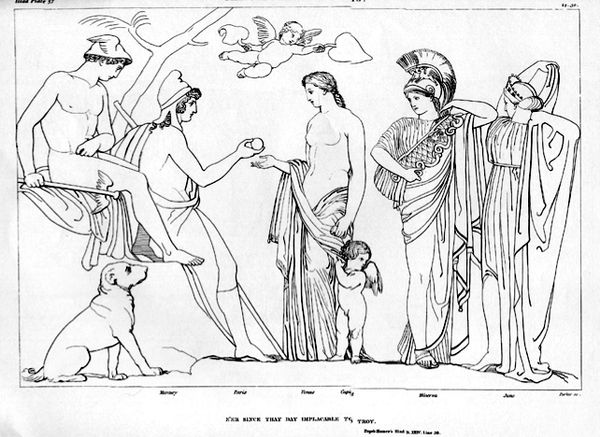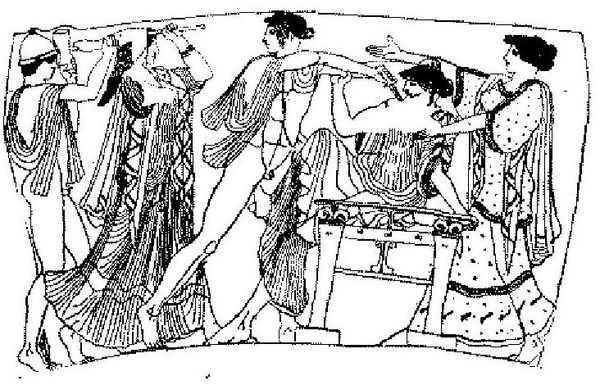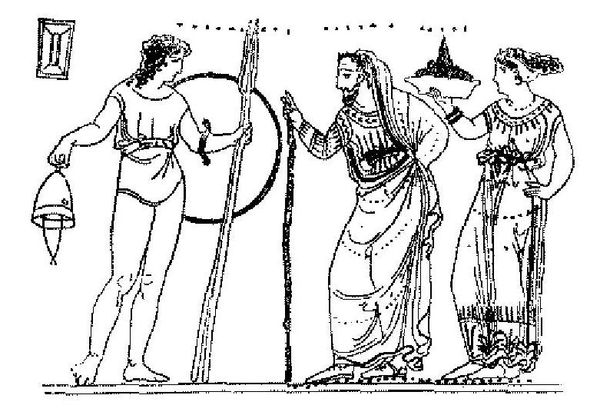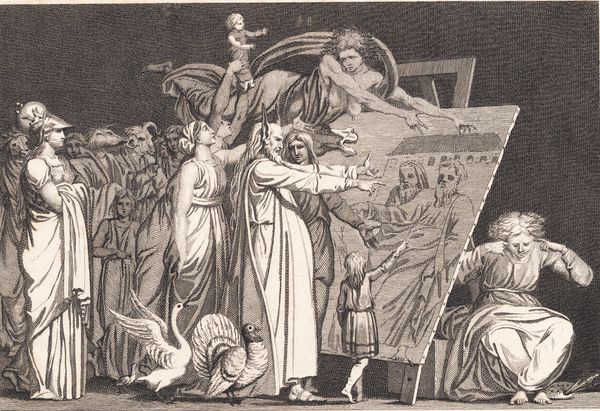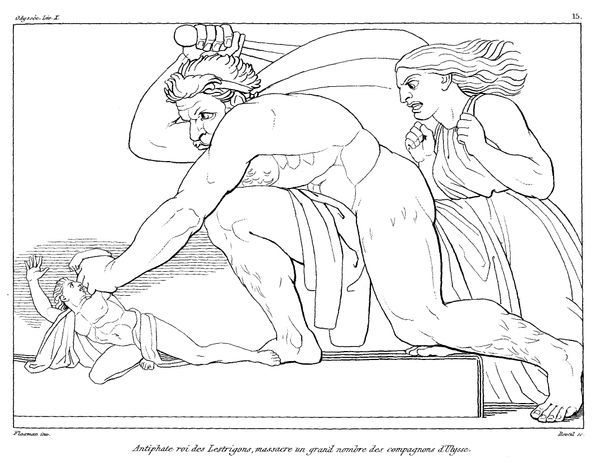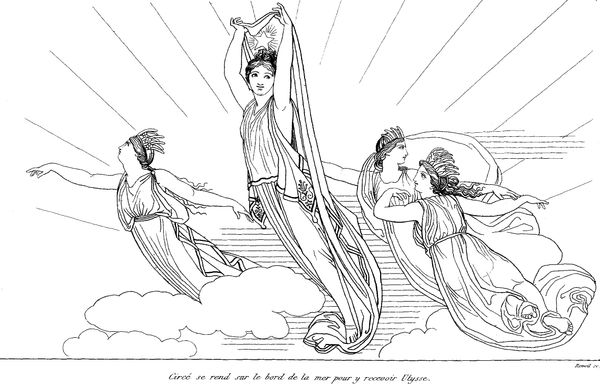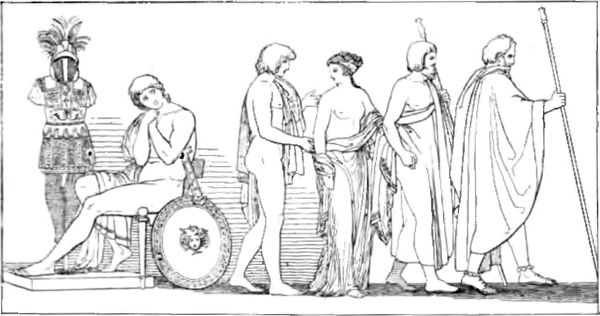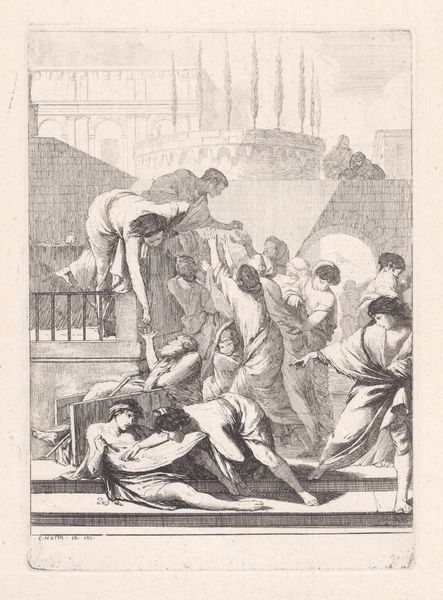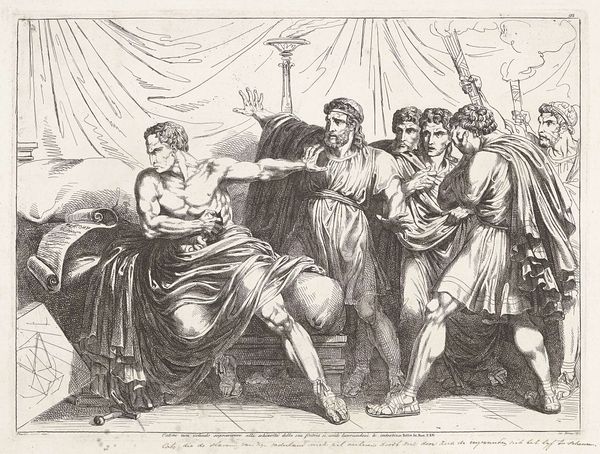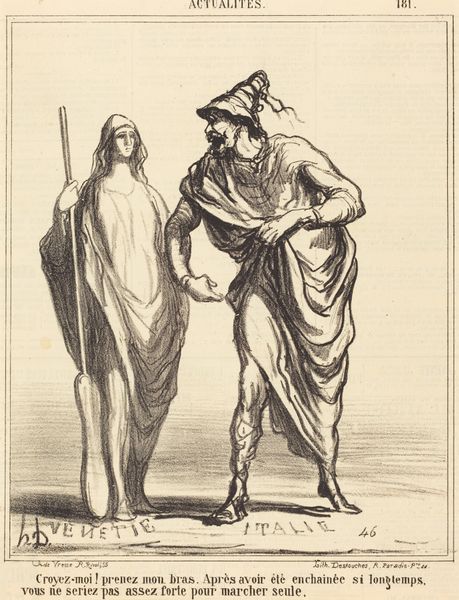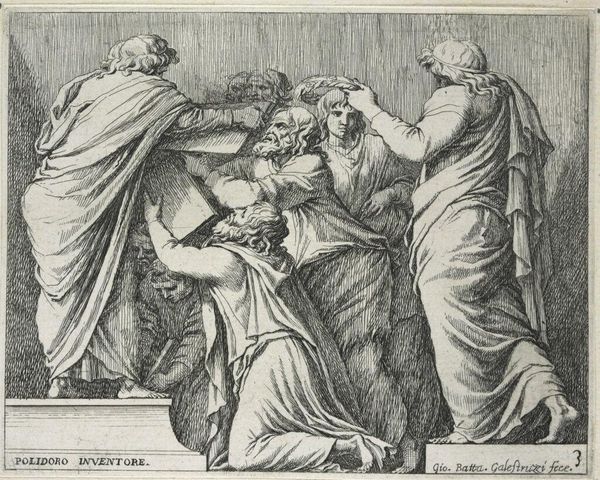
drawing, ink
#
drawing
#
neoclacissism
#
narrative-art
#
pen illustration
#
greek-and-roman-art
#
landscape
#
classical-realism
#
figuration
#
ink line art
#
ink
#
line
#
history-painting
Copyright: Public domain
Curator: We are looking at John Flaxman’s "Illustration to Odyssey," created in 1793 using ink on paper. My first thought: this is deceptively simple, and almost feels more modern than neoclassical, with its emphasis on line and form. Editor: Absolutely. The clean lines and stark contrast evoke a sense of ancient Greek friezes, but it feels incredibly restrained. There's a certain detachment in the figures that’s quite striking, like captured in some kind of idealized social setting. It gives a silent commentary about this scene of Homer's Odyssey. Curator: Exactly! Flaxman was a master of conveying narrative through minimalist means. Here, he depicts Nausicaa and her handmaidens playing ball. Look at the composition, how he arranges the figures in a shallow space, almost like a stage. It emphasizes clarity and a kind of moral purity. Editor: But who decides what kind of purity or aesthetic? Considering Flaxman’s position in the art world and England’s imperial project at that time, the artist participated in the revival of classical art and in promoting a white, Western canon. It is hard for me not to examine the power dynamics at play in portraying this classical narrative. Curator: Of course, one can look at it that way too, but also, Flaxman was associated with reformist circles, so, his neoclassicism was understood in relation to a reform in art. He rejected the flamboyance of the Rococo as much as contemporary British political corruption. The extreme simplicity reflects a kind of political stance. Editor: That is right; he had deep dissenting beliefs against corrupt society in the Age of Revolutions, however the fact remains, the depiction contributes to an aesthetic tradition rooted in a white Western ideal, even when understood as reform. How do we, responsibly, contextualize the social role of art within contemporary cultural expectations? Curator: By acknowledging those nuances, engaging with them openly and inviting diverse interpretations. It is the institution’s duty. We are hoping this can stimulate such open and meaningful conversations between artworks and viewers like you. Editor: Beautiful. The lines now invite multiple gazes. Thank you.
Comments
No comments
Be the first to comment and join the conversation on the ultimate creative platform.
